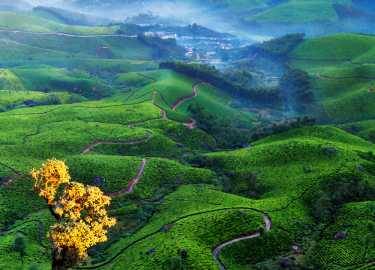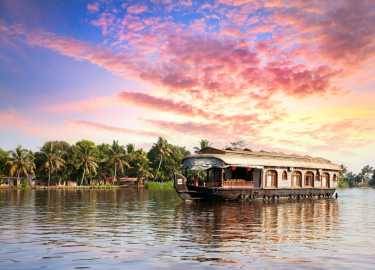Krishnapuram Palace in Alleppey is a palace-cum-museum located in the Kayamkulam Alappuzha district and is a rare specimen of Kerala-style architecture. The structure has gabled roofs, narrow corridors, and dormer windows. The palace was built in the 18th century by the former Travancore king Marthanda Varma Maharaja and is now a protected monument under the Archaeology Department.
Marvelous Architecture In Krishnapuram Palace- This palace's traditional architecture draws thousands of tourists annually. Krishnapuram Palace has a mural depicting the story of Gajendra Moksham in addition to its architecture (salvation of elephant). This magnificent piece of art dates back to the 18th century, is one of India's largest murals, and is a fantastic blend of colors and expressions. The museum housed in this 16-block palace houses antiques, sculptures, paintings, weapons, megalithic remains, stone inscriptions, coins, and bronze artifacts.
Buddha Hall In Krishnapuram Palace- In the Buddha Mandapam or Buddha Hall is a lovely statue of one of the four ancient Buddhas from the 10th century. The statue is surrounded by numerous blossoming plants and is situated in the middle of a well-kept and maintained garden. According to scholars, this statue is a pure delight to look at and is thought to date to the fifth or maybe the seventh century.
Sightseeing In Krishnapuram Palace- On a small hilltop, Krishnapuram Palace is surrounded by a terraced garden with fountains, ponds, and lawns. The scientific techniques prescribed for protecting heritage monuments recently renovated the garden.
After conquering and annexing Odanad in the Odanad-Travancore War of 1746, King Marthanda Varma of Travancore erected the Krishnapuram Palace. At first, King Marthanda Varma just constructed a modest one-story palace. Under the direction of Prime Minister Ramayyan Dalawa, this luxurious palace, known locally as Ettukettu, was constructed in the traditional style with a nearby pond, temple, and urappura. Later, Prime Minister Ayyappan Marthanada Pillai expanded this one-story building.
However, the current building is a stunning three-story edifice inside the compound. The Kerala Archaeological Department refurbished this structure in the 1950s, giving it a contemporary appearance and adhering to the approved scientific standards for preserving historic structures. The Archaeological Museum and its several offices are housed in the Krishnapuram Palace, a protected landmark.
While there are several statues inside the museum, the one that draws the most attention is the Buddha statue, housed in a chamber in the garden. This one-piece statue dates back over a thousand years. The museum also houses a Sanskrit Bible from 1886.
One of the largest mural paintings in all of Kerala may be found here, a major draw to the area. This mural artwork, known as the "Gajendra Moksha," has significant historical significance and is around 53 square feet. Kayamkulam Vaal, a two-edged sword, is also present here. The Kerala Archaeological Department currently maintains the Krishnapuram Palace, which houses several artifacts that originally belonged to the palace and its previous owner.
Why Visit Krishnapuram Palace
The Krishnapura Chhatris are situated on the banks of the River Khan due to the Holker dynasty. This monument showcases the authentic Maratha architectural style with domes and spires, drawing tourists awestruck by its majesty. The architectural beauty of these lovely Chhatris is well renowned. When they are lit up at night, it makes for breathtaking images. The Hokar Dynasty's royal tombs, known as Krishnapura Chhatris, represent the renown and glory of the Holkars in the region.











